Microbial Risks
Ecolab is committed to providing you with the latest public health news and resources. Whether you need detailed information about specific organisms of concern, cleaning product advice, or tips for increasing food safety and preventing infection in your facility, we are your trusted source.
Microorganisms come in varying shapes and sizes, from very small virus particles to larger yeasts and molds. Many can be beneficial, but some can spoil food, taint water systems and contaminate equipment resulting in inefficiencies.
Pathogens present a more serious microbial risk since they are hazardous microorganisms with the potential to cause disease in humans and/or animals, resulting in food safety and public health concerns. Valid preventive controls are needed to manage possible issues with pathogens. Ecolab brings you in-depth technical information about a number of pathogens to acquaint you with these risks, their transmission routes and how they can be controlled.
Pathogen Fact Sheets
AFRICAN SWINE FEVER
African Swine Fever (ASF) is a highly contagious and deadly viral disease that can impact domestic and wild pigs. In 2019, an increase in ASF outbreaks was reported in several African, Asian and European countries. The ASF virus is a large, enveloped, DNA virus. The genus is Asfivirus, a member of the Asfarviridae family.
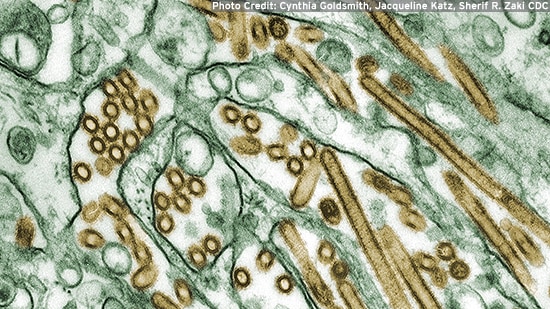
Avian Influenza
Avian Influenza is often referred to as Bird Flu. It includes a large group of viruses that can infect all species of birds with varying manifestations dependent on the bird species involved.
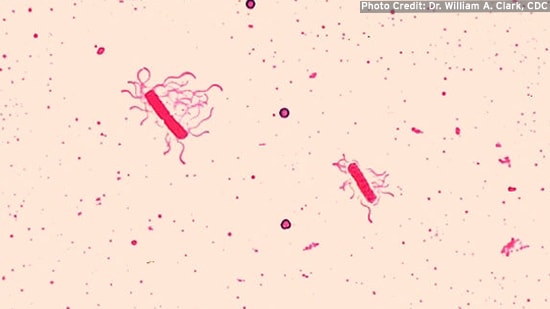
Bacillus Cereus
Bacillus cereus is a spore-forming bacterium that can be frequently isolated from soil and some food.1 B. cereus spores are more resistant to heat and chemical treatments than vegetative pathogens such as Salmonella, E. coli, Campylobacter, and Listeria monocytogenes.
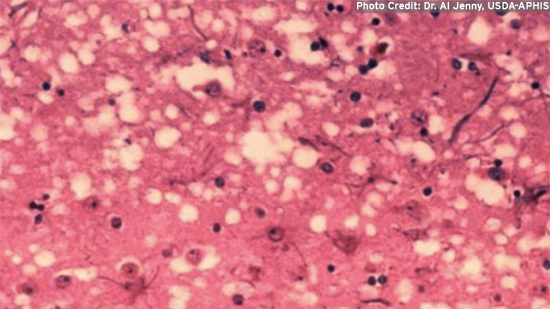
BSE (Mad Cow Disease)
Bovine Spongiform Encephalopathy (BSE) or Mad Cow Disease is a “transmissible, neurodegenerative, fatal brain disease of cattle.” First diagnosed in the United Kingdom in 1986, investigations suggest that bovine brain and spinal cord which was contaminated by the BSE agent (called a prion) may have been used as ingredients in cattle feed.
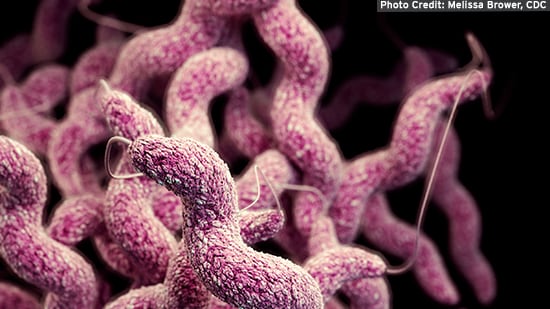
CAMPYLOBACTER
Campylobacteriosis is caused by Campylobacter jejuni, one of the most common bacterial causes of acute bacterial diarrheal illness worldwide. Cases of campylobacteriosis are generally isolated, random events, but outbreaks affecting several people can also occur.
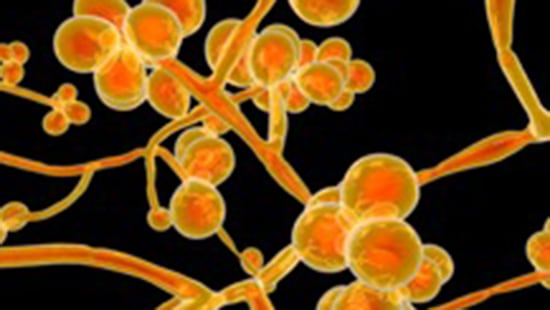
C. Auris
Candida auris (C. auris) is an emerging multidrug-resistant yeast (a type of fungus). It has caused severe infections in hospitalized patients and nursing home residents. C. auris can persist on surfaces and spreads easily between patients in healthcare facilities.
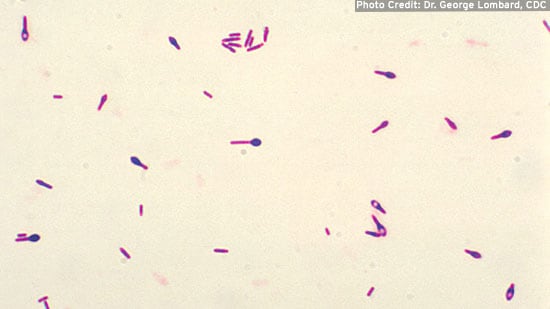
C. BOTULINUM
Clostridium botulinum (C. botulinum) is a spore-forming bacterium that produces a very powerful neurotoxin that causes botulism. The toxin is among the most toxic of all naturally occurring substances. Botulism is usually associated with consumption of the toxin in food.
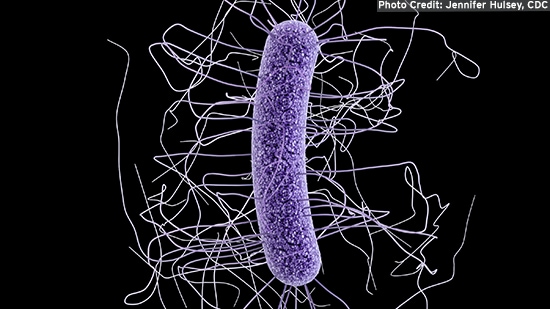
CLOSTRIDIOIDES DIFFICILE
Clostridioides difficile (C. difficile) is a bacterium that causes diarrhea and more serious intestinal conditions such as colitis. It is the most frequently identified cause of hospital-acquired diarrheal infection.

Clostridium Perfringens
Clostridium perfringens is a sporeforming organism, with spores very widely distributed in nature and in the intestinal tracts of animals and humans. Spores commonly contaminate foods. C. perfringens causes a relatively mild foodborne illness after ingestion.
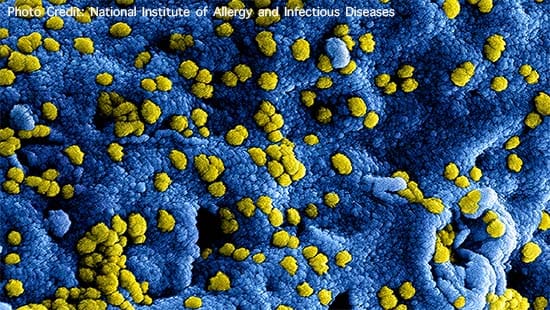
Coronavirus
CHIKUNGUNYA
Chikungunya and Dengue are mosquito-borne virus infections commonly transmitted by the female mosquitoes of two particular species: Aedes aegypti and Aedes albopictus. Dengue is found predominantly in tropical and sub-tropical areas of Asia and Latin America, with chikungunya occurring across Africa, Asia, the Americas and the Indian subcontinent.

CRONOBACTER SAKAZAKII
Cronobacter sakazakii is a bacterium within the family Enterobacteriaceae. The organism was called "yellow-pigmented Enterobacter cloacae" until 1980, when it was renamed Enterobacter sakazakii. Recently, E. sakazakii has been re-classified as 6 species within the genus Cronobacter.

CRYPTOSPORIDIUM
Cryptosporidium is recognized as one of the most common causes of waterborne disease among humans in the United States. The parasite may be found in every region of the United States and throughout the world.

CYCLOSPORA
Cyclospora is a parasite that infects the small intestine, causing cyclosporiasis. Cyclosporiasis became a nationally notifiable disease in the United States in 1999, and was reported in 37 states in 2008.
Dengue
Dengue and chikungunya are mosquito-borne virus infections commonly transmitted by the female mosquitoes of two particular species: Aedes aegypti and Aedes albopictus. Dengue is found predominantly in tropical and sub-tropical areas of Asia and Latin America, with chikungunya occurring across Africa, Asia, the Americas and the Indian subcontinent.

Ebola
Ebola virus disease (EVD), formerly known as Ebola hemorrhagic fever, is a rare but severe, often fatal illness in humans. The virus is transmitted to people from wild animals and spreads in the human population through human-to-human transmission. The average EVD case fatality rate is around 50%. Case fatality rates have varied from 25% to 90% in past outbreaks1.
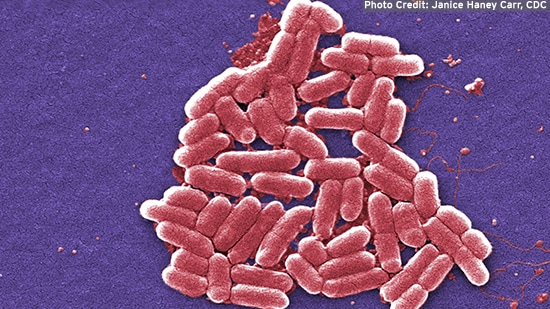
E. Coli
E. coli O157:H7 is a member of the enterohemorrhagic E. coli group. These Shiga toxin-producing E. coli (STEC) are responsible for the majority of very serious, food-related E. coli infections that cause severe damage to the lining of the intestine.
Foot-And-Mouth
The foot-and-mouth disease (FMD) crisis of 2001 in the United Kingdom received a great deal of media attention and resulted in confusion regarding the differences between foot-and-mouth disease and Mad Cow disease, which is also of animal origin. As a result of the FMD outbreak, over 6 million animals were slaughtered.

Giardia
Giardia duodenalis (or Giardia lamblia or Giardia intestinalis) is a single celled animal, i.e., a protozoan, that moves with the aid of several flagella. It is sometimes referred to as Lamblia intestinalis. It is the causative agent of giardiasis, an infection of the small intestine and the most frequent cause of nonbacterial diarrhea in North America.

Hepatitis A
There are several Hepatitis viruses (Hepatitis A, B, C, D and E) that cause human liver disease. Of the five virus types, only Hepatitis A can be transmitted by food through the fecal-oral route and is considered a major foodborne disease agent. Hepatitis E virus can be waterborne, and researchers have suggested that it could also be foodborne.
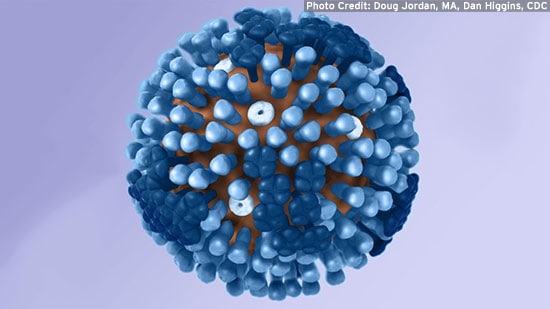
H1N1 Pandemic Flu
H1N1 Pandemic Flu is a respiratory disease caused by an influenza A virus. It primarily impacts pigs, which can also become infected by avian (bird) and human strains of influenza. If pigs are infected with multiple strains, the strains may combine to create a strain that is more easily transmitted among humans.
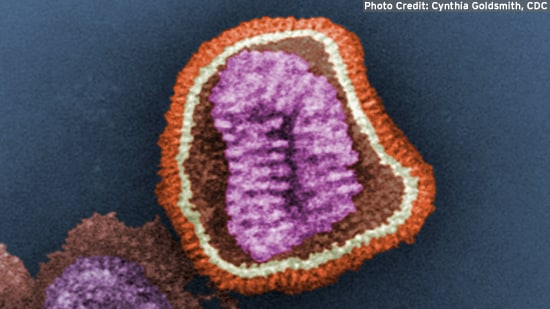
Influenza
Influenza, commonly referred to as “flu” or “seasonal flu,” is a virus that causes a common respiratory infection with fever and often respiratory complications that is easily passed from human to human. Most people have some immunity to the common seasonal influenza and a vaccine is typically available each year.
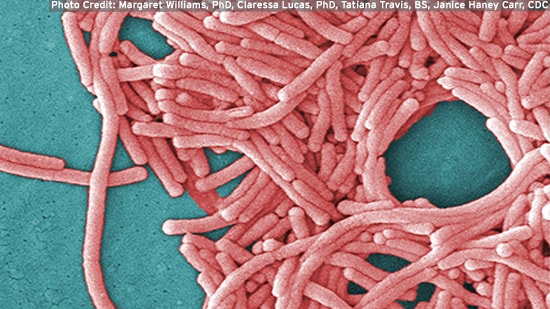
LEGIONNAIRES' DISEASE
Legionella pneumophila is a bacterium that can cause a disease known as legionellosis or Legionnaires' disease (LD). LD was first recognized in the late 1970's following an outbreak of pneumonia (lung infection) in people attending an American Legion conference in Philadelphia, PA.
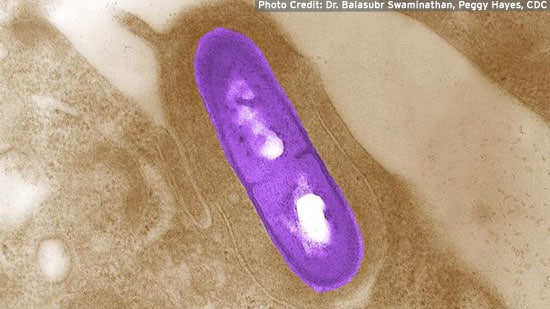
Listeria
Listeria monocytogenes, commonly referred to as Listeria, is a pathogen that causes listeriosis, a serious human illness. It is unlike most other foodborne pathogens because it can grow at proper refrigeration temperatures.
Malaria
Malaria is a disease, transmitted to humans through the bite of Anopheles mosquitoes, which causes infection of the liver and red blood cells by any one of four protozoan parasites from the genus Plasmodium. It is arguably one of the three most persistent, prevalent and devastating diseases to afflict humans (along with tuberculosis and AIDS) and is considered to be a risk for almost half of the world’s population.
Measles
Measles is a viral infection. It is a highly contagious respiratory disease and is spread via droplets through the air from coughing and sneezing. Measles is caused by a single-stranded, enveloped RNA virus.
MERS
(Middle East Respiratory Syndrome)
Middle East Respiratory Syndrome (MERS) is a viral respiratory illness caused by a coronavirus (CoV). Public health officials often refer to the virus as MERS-CoV. It was first reported in Saudi Arabia in September 2012.
Mpox
Mumps
Mumps is a contagious viral disease that affects the salivary glands. Typically, it is a mild childhood disease affecting children between the ages of five and nine. In cases where adults are affected, complications tend to be more serious.
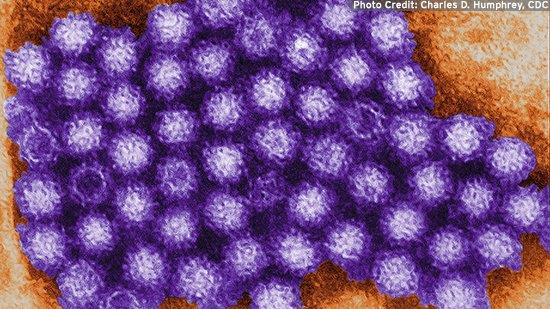
Norovirus
Norovirus is widely known for causing outbreaks of illness among large numbers of people on cruise ships. Since the original virus was identified in 1968, there has been increasing recognition of norovirus as an agent of viral gastroenteritis traced to restaurants and catered meals, nursing homes, schools and camps.
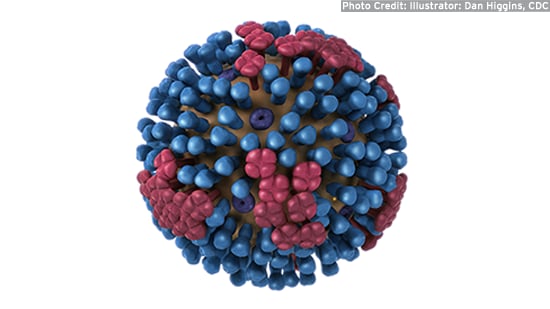
Pandemic Flu
Pandemic influenza is a virulent strain of human flu that causes a global outbreak of serious illness, resulting from the emergence of a new virus strain to which the overall population possesses no immunity. Because of the lack of natural immunity, the disease can spread easily from person to person.

Pertussis
(Whooping Cough)
Pertussis, also commonly called whooping cough, is a bacterial infection of the respiratory tract caused by Bordetella pertussis. Pertussis infections occur when Bordetella pertussis bacteria attach to cilia, small hair like structures on the surfaces of some cells, in the upper respiratory tract.

Respiratory syncytial virus (RSV)
Respiratory syncytial virus (RSV) is a common respiratory virus. While most people with RSV experience mild cold-like symptoms and recover in a week or two, infants and older adults can become seriously ill from the virus.
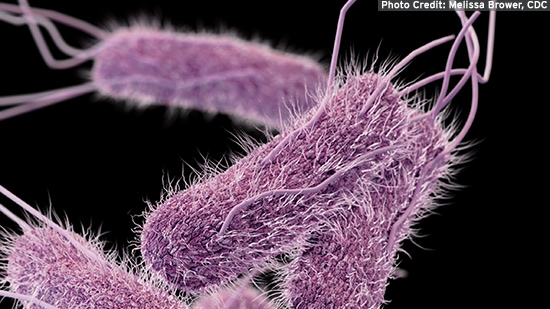
Salmonella
Salmonella are a group of bacteria that can cause diarrheal illness in people. This constitutes a major public health burden and represents a significant cost to society in many countries. One species, Salmonella enterica has more than 2,000 serovars. Salmonella enterica ser.Typhimurium and Salmonella Enteritidis most commonly encountered globally.
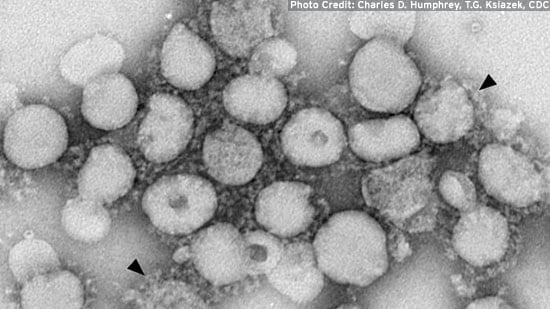
SARS
Severe acute respiratory syndrome (SARS) is a viral respiratory illness caused by a coronavirus. It was first reported in Asia in February 2003, likely originating in China. Over the next few months, the illness spread to more than two dozen countries in North America, South America, Europe and Asia before the SARS global outbreak of 2003 was contained.

Shigella
Shigella are a group of bacteria that can cause shigellosis – a diarrheal illness in humans. The two types of Shigella most commonly associated with human illness in the developed world are Shigella sonnei and Shigella flexneri. In developing parts of the world, Shigella dysenteriae causes deadly epidemics of dysentery.

STAPH. AUREUS FOODBORNE
Staphylococcus aureus is a common cause of foodborne illness that is not covered in some epidemiologic surveillance programmes. Some strains of Staphylococcus aureus cause staphylococcal food poisoning through production of heat-stable staphylococcal toxins.

STAPH. AUREUS MRSA
MRSA stands for Methicillin resistant Staphylococcus aureus. It is a bacterium that has developed a resistance to most antibiotics such as Methicillin, commonly used for Staphylococcus infections. This results in infections that are more difficult to treat than ordinary Staph infections.

TUBERCULOSIS
Tuberculosis (TB) is an infection caused by Mycobacterium tuberculosis and some other Mycobacterium species. This bacterium mostly infects the lung, leading to classical TB. Other internal organs, the central nervous system and the musculoskeletal system can also be infected.

Vibrio
Vibrio species account for a significant number of foodborne infections from the consumption of raw or undercooked shellfish. They require salt to grow, and are thus associated with ocean-sourced seafood.
West Nile Virus
West Nile Virus (WNV) is an enveloped virus, belonging to the family Flaviviridae (origin: yellow fever virus), that can cause a flu-like symptoms and in rare circumstances, a neurological illness which could lead to death.
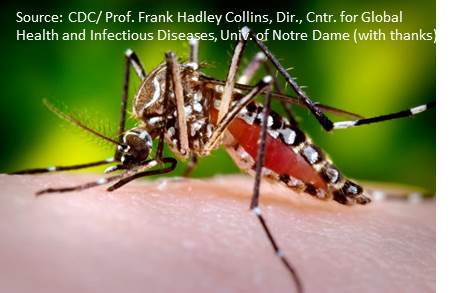
Zika Virus
Zika virus is a mosquito-borne virus transmitted primarily by the bite of the mosquito, Aedes aegypti. This species of mosquito also can transmit the viruses that cause dengue and chikungunya.


